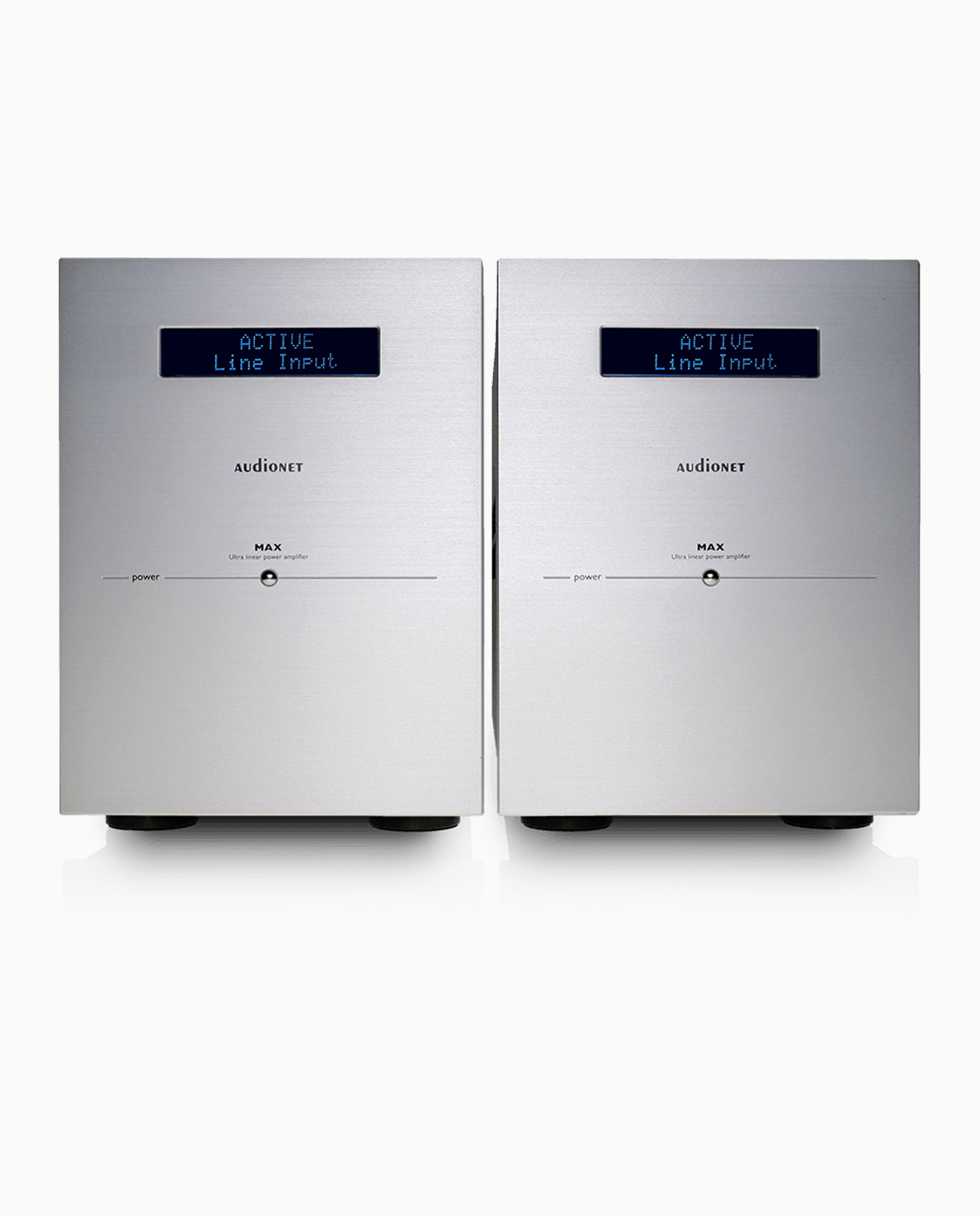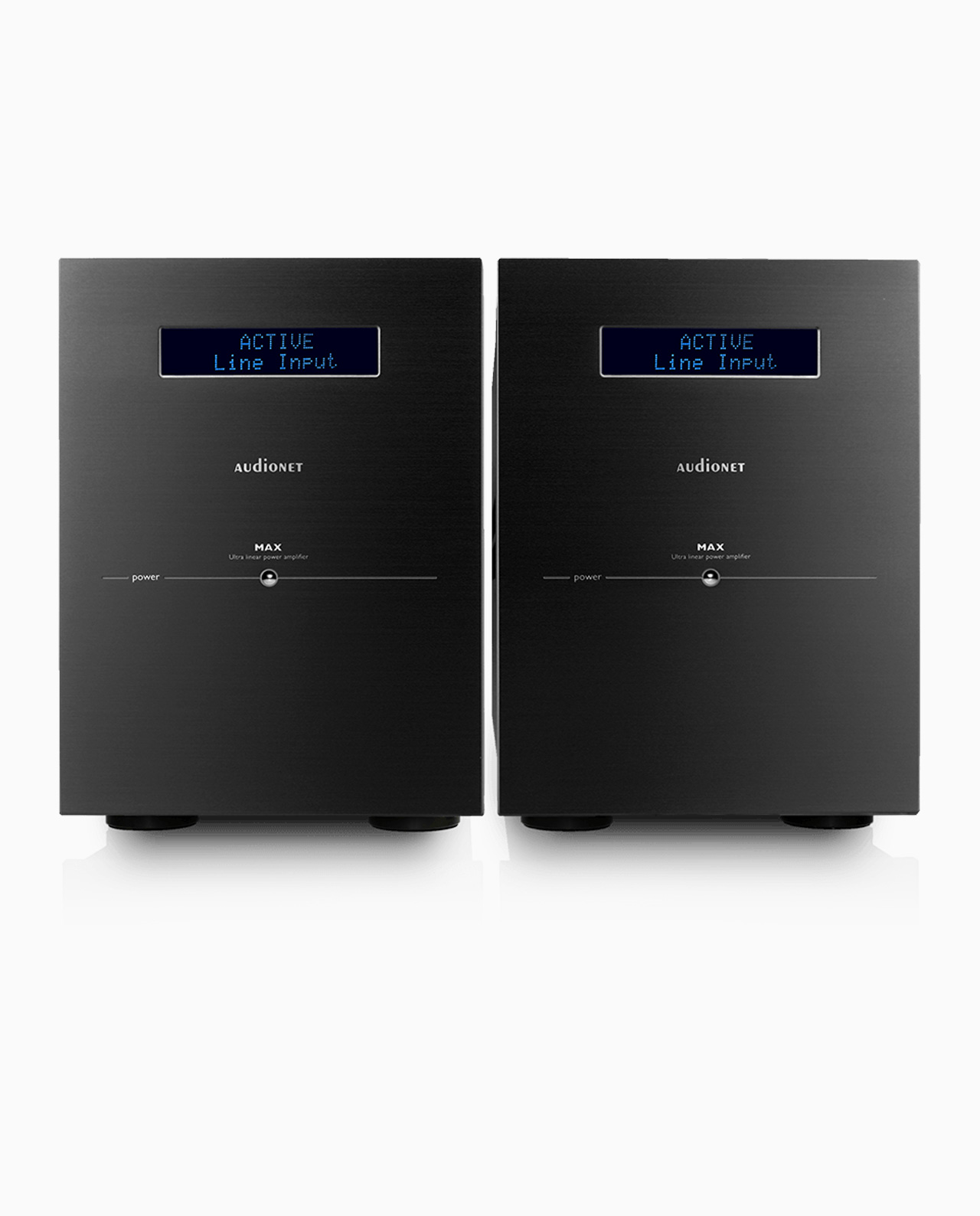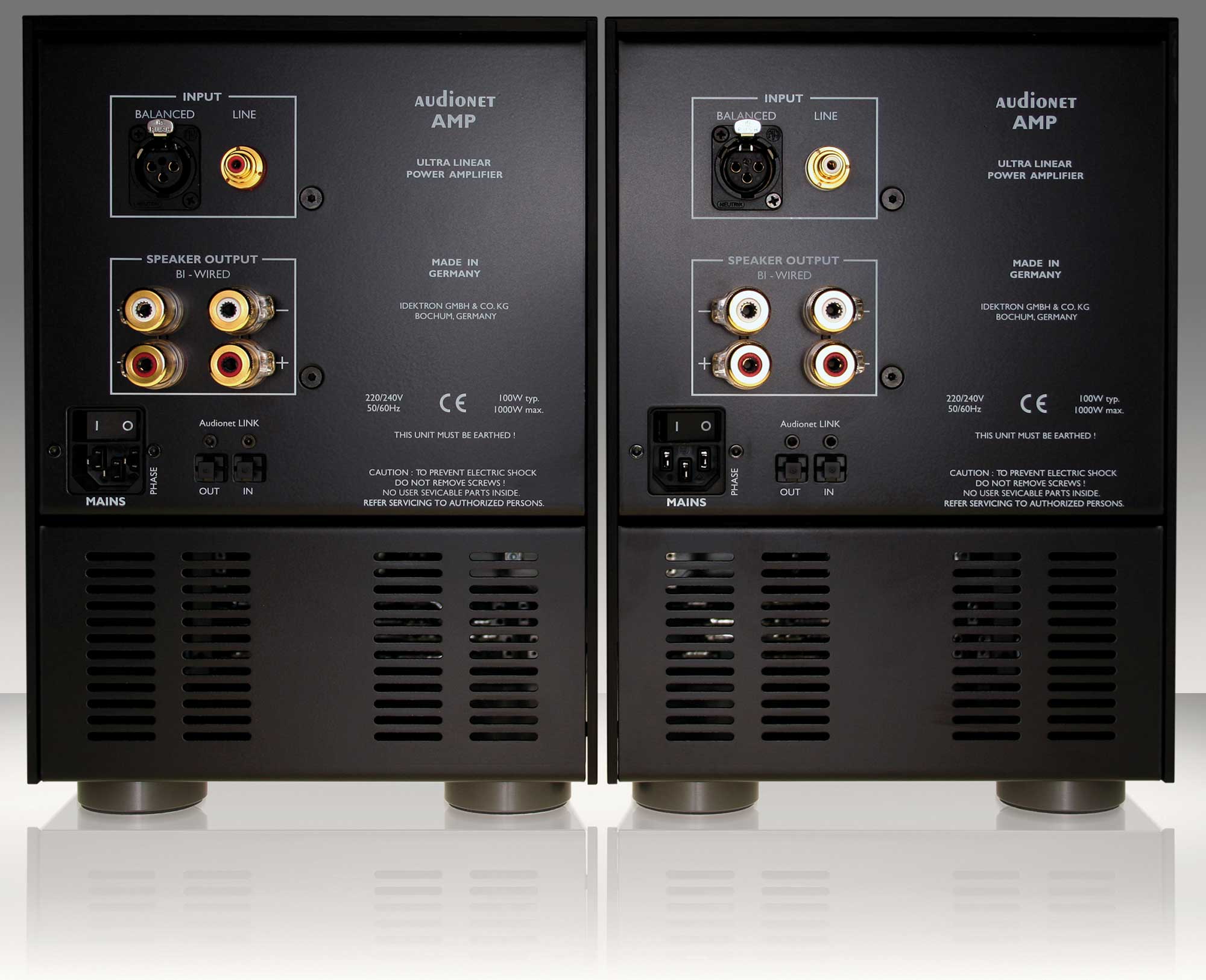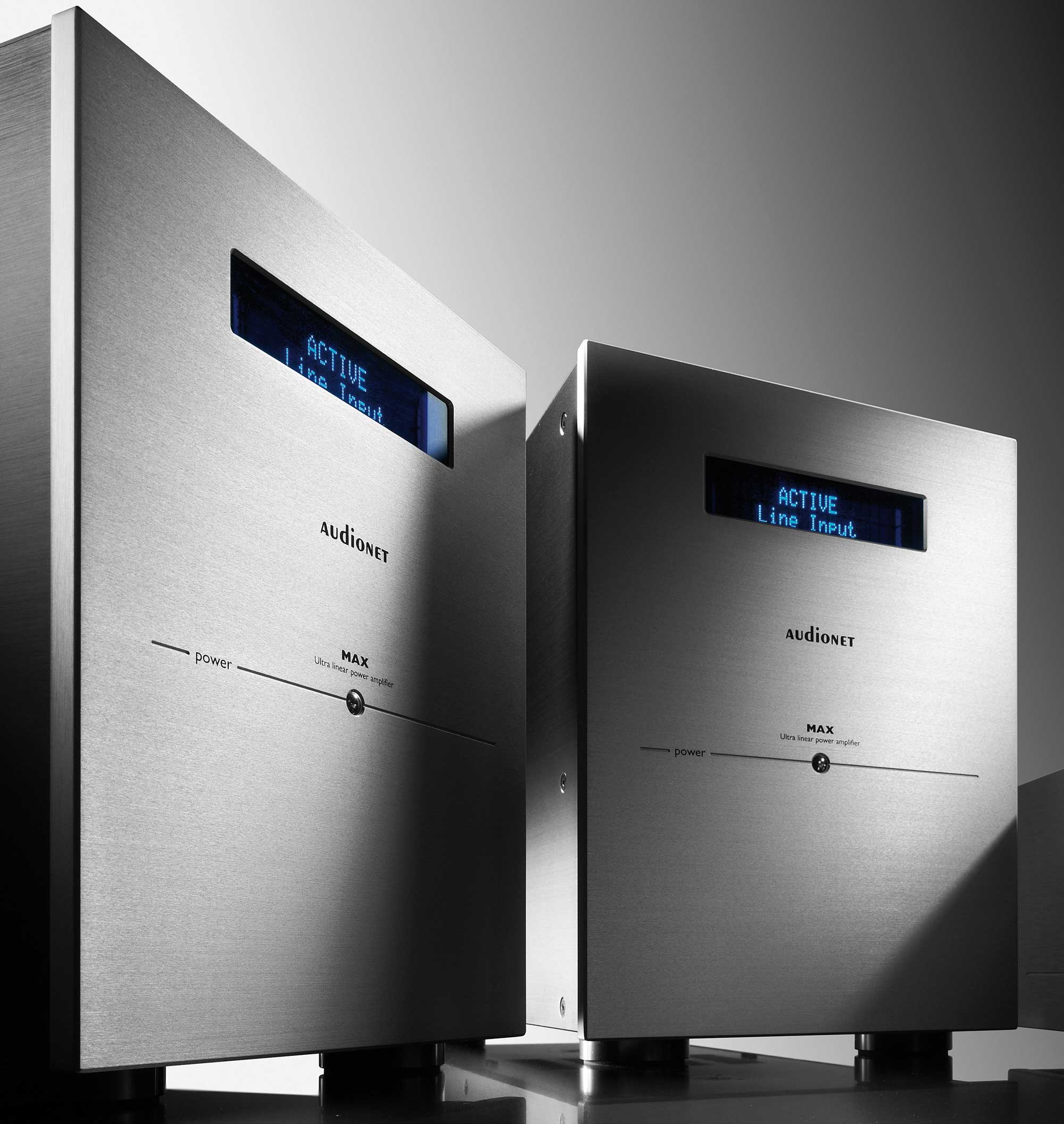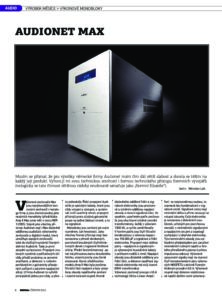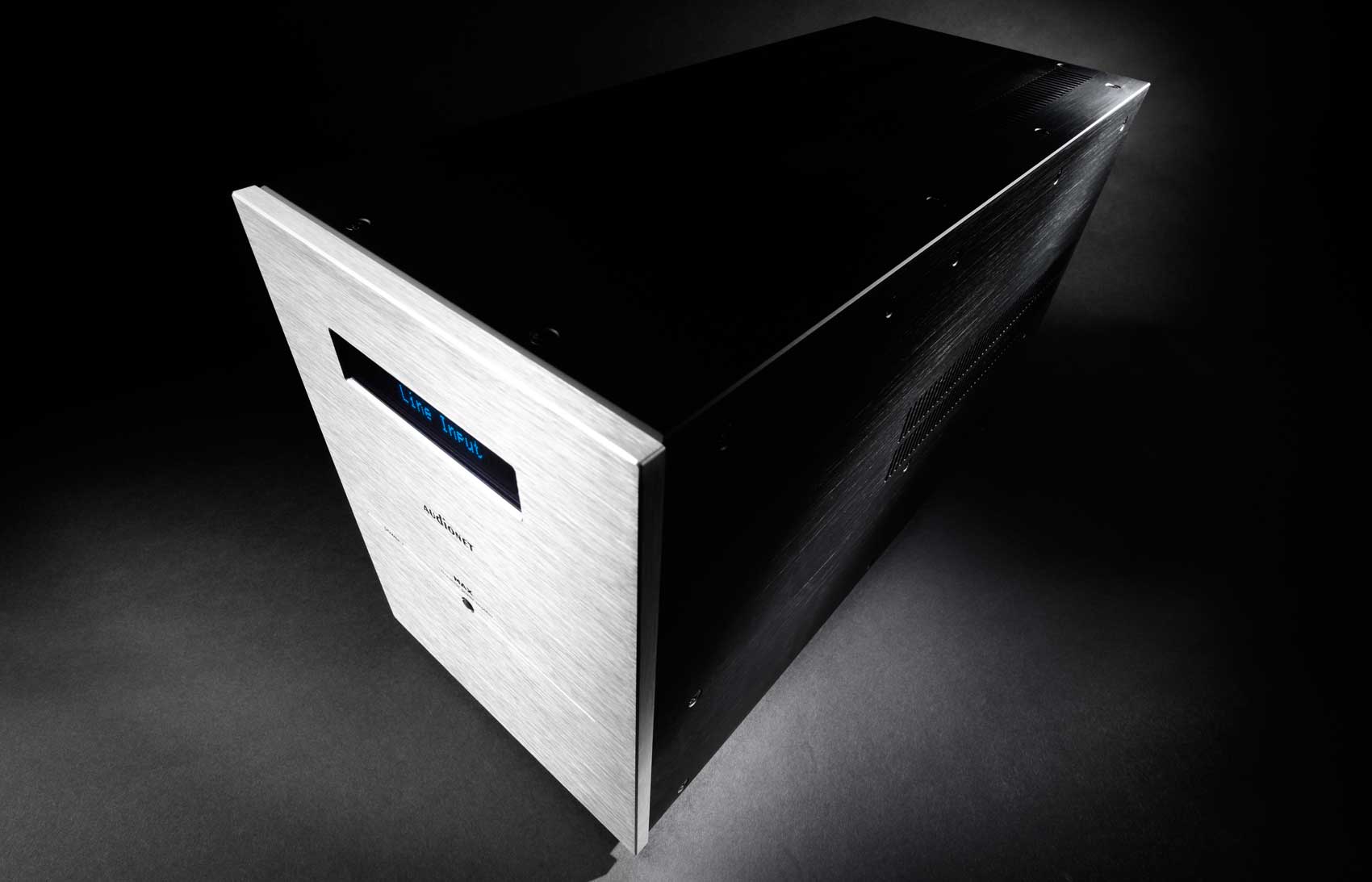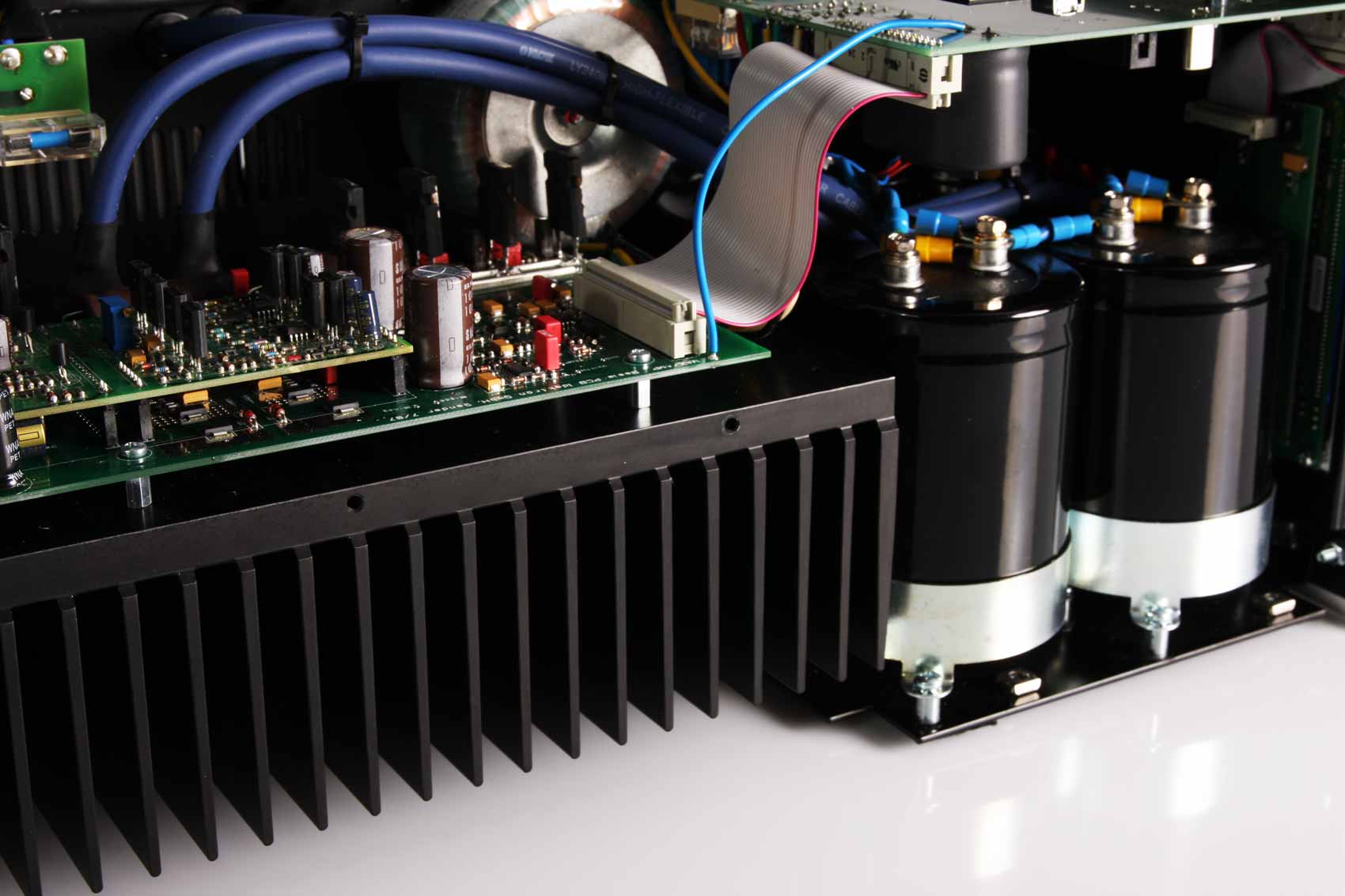To guarantee absolute channel separation, MAX is designed as a mono amplifier. The magnetically and capacitatively optimized assembly of the mono-blocks largely eliminates all feedback from electrical interference as well as from reciprocal influences between the amplification channels during the amplification process. The massive aluminium cabinet eradicates any effects of the dreaded subsonic noise.
In order to optimize its high-frequency attributes and velocity, we indulged in an orgy of minimalization. The signal paths have been kept to a minimum and contain no sound-impairing components such as coils, chokes or power relays.
MAX comes equipped with RCA and XLR inputs, which are electronically switched over gold-plated precision relays. The input stage is configured as a cascaded and bootstrapped differential amplifier with a low-noise, monolithic dual FET, thus electrically decoupling the end amplifiers from the input signal and avoiding harmful interaction with source. A special double cascade decouples the source signal from the driving and output stage. The driving stage linearizes distortion of the output circuit locally with a unique, cross-linked correction circuit in real time. The input and driving stage are separately powered by an oversized 80 VA toroid-core transformer with separate windings for positive and negative operating voltage.
The output stage is equipped with eight hand selected power MOSFETs with actively controlled bias current amounting to 0.6 A. The supply voltage is stabilized as rapidly as inhumanly possible by optimized discrete MOSFET regulators. To reach optimal performance, the negative and positive operating voltage is decoupled entirely. Two individual 1000-VA toroid-core transformers feed the positive and the negative half-cycles of the mains. Four special, fast and impulse-resistant high-current capacitors with a total filtering capacity amounting to 156,000 uF serve as an accumulator.
A microprocessor unit controls all functions and permanently monitors DC, HF, temperature and overload. In the case of a fault, it disconnects the MAX from the mains supply. A large, two-line display indicates fault sources in plain text. An Audionet-Link provides optical remote activation and signal-dependence in three sensitivity ranges. The control unit has a separate power supply from a transformer.


